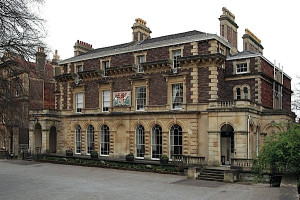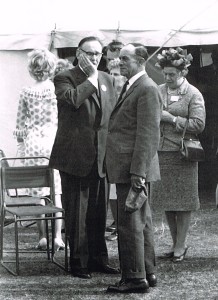William Mitchell purchased the estate in 1939 shortly after the death of Wilfred Finch. It was thought at the time the he wanted the shooting rights and that he would have liked to purchase the Rectory, by far the most imposing building in the village. At that stage, the Diocese did not want to sell, although not many years later it was found that no Rector could be appointed who would be able to afford the expense of such a building and it was sold as a private house. William Mitchell sold to the Society of Merchant Venturers of Bristol in 1945, shortly after the Second World War.
Society of Merchant Venturers The Society is believed to have evolved from a Guild of Merchants which existed in the 13th Century (to quote from the Merchant Venturers’ website). A Royal Charter from Edward VI in 1552 was granted to ‘The Master, Wardens and Commonality of Merchant Venturers of the City of Bristol’. New charters were granted by subsequent monarchs – most recently by Queen Elizabeth II. In the 18th century the merchants were much involved in the slave trade, but in 2007 they joined with the Lord Mayor of Bristol and other civic representatives in signing a statement regretting Bristol’s role in the slave trade. In the 19th century, the Society was instrumental in putting money into docks and railways in Bristol but by the 20th century much of their work was philanthropic. It was thus necessary to find suitable investments, and the purchase of the Milton Keynes estate, along with others in the area, was one of these.
By all accounts, the Society was a good landlord and looked after the interests of its tenant farmers. The Macbeth family at Manor Farm hosted gatherings of tenants for a celebratory meal in a marquee at their farm on several occasions on behalf of the Society. The Society’s Land Steward Mr P.E. Tyhurst lived and had his office in the house called Sunnyside just north of All Saints church.
As owners of the village, the Merchant Venturers also owned the Swan Inn and there was a proposal to change the name to the Merchants’ Arms. Before this suggestion could be adopted in 1951 the inn required extensive renovation to comply with new health regulations and it was decided to sell out to J.W. Green’s brewery of Luton, and gradually a few other buildings in the village were sold off, mostly to sitting tenants.
The Merchant Venturers were fortunate in being able to exploit the mineral rights of the land in their control. The M 1 and other motorways were being constructed, and gravel was needed in huge quantities. Large gravel pits were excavated in several places round the village, later filled with refuse which gave off methane as it deteriorated – a problem which became apparent long after the Merchant Venturers had sold out to the Milton Keynes Development Corporation in about 1970.
Milton Keynes Development Corporation continued the process off selling off the estate, mostly to developers who would establish housing and industry following the plans of the Corporation. Where appropriate, they sold to sitting tenants. The government wound up the Corporation in 1992 and the remaining land was handed to the Commission for New Towns for development and later still the reins were handed to English Partnerships. This latter was merged with the Housing Corporation to become the Homes and Communities Agency (HCA).


